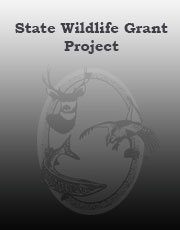
An Assessment of Direct Mortality to Avifauna from Wind Energy Facilities in North Dakota and South Dakota (SWG T-36-R)
Renewable energy sources have the potential to provide enough energy to exceed current energy demands. In the U. S., 9% of energy consumption in 2011 was derived from renewable sources. Currently, the most technically developed and cost-effective source is land-based wind energy and the U.S. Department of Energy (DOE) has targeted 20% of electricity generated from wind by 2030. Although there are some clear advantages to using renewables, the resources are not without negative impacts to the environment. Moreover, the effects of wind energy development to wildlife are unique to each wind farm. However, these effects remain poorly understood and require additional research to elucidate and quantify.
The Northern Great Plains (NGP) contains much of the remaining temperate grasslands and, within the NGP, the Prairie Pothole Region (PPR) provides important habitat for many species of waterfowl, shorebirds, waterbirds, and grassland songbirds. This region also has high wind energy potential, but the effects of wind energy developments on wildlife populations in the NGP remains understudied. Thus, our objectives were to estimate avian and bat mortality rates, document species at high risk to direct mortality, and assess the influence of habitat variables on mortality. In 2013 and 2014, we completed turbine searches for carcasses at the Tatanka Wind Farm (TAWF) and the Edgeley-Kulm Wind Farm (EKWF) in South Dakota and North Dakota. We xi estimated spring (Mar-Jun) mortality of 1.86 (SE = 0.22) deaths/MW at TAWF and 2.55 (SE = 0.51) deaths/MW at EKWF. Our spring mortality rates are similar to what has been estimated for yearly mortality rates in the Great Plains, suggesting that full-year mortality rates are higher at these wind farms than others in the region. Waterfowl spring mortality rates were 0.79 (SE = 0.11) and 0.91 (SE = 0.10) deaths/MW at TAWF and EKWF, respectively. We used a Generalized Estimating Equation (GEE) to estimate the influence of landscape variables around individual turbines on waterfowl mortality and documented cropland to have a negative influence on mortality rates. We suggest future wind facility siting decisions consider avoiding grassland habitats and locate turbines in fragmented and converted habitat outside of important waterfowl areas.

